This Is Why Comets Glow An Eerie Green Color

The ices and rock aren’t green, and neither are the tails. So where does a comet’s green color come from?
Every so often, with extreme regularity, comets will plunge from beyond the orbit of Neptune into the inner Solar System. From well beyond the orbit of Saturn, they remain cold, frozen, and in a dormant state; although they’re always moving, nothing about them changes. But when they start to approach the orbit of Jupiter, being in close proximity to the Sun changes things.
The outer parts of the comet heat up, the frozen ices on the surface start to sublimate, and the radiation and wind from the Sun start to push the surface molecules away. Before long, your comet glows with not just the reflected light from the Sun, but with two tails — one grey, one blue — and an eerie, green coma around the center. Here’s why that happens.
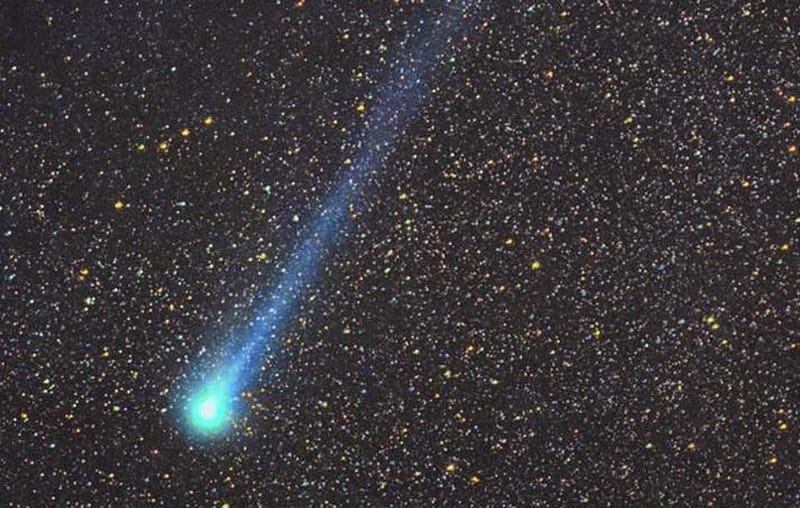
Comets are made out of a mix of rocky components, similar to what makes up the Earth’s mantle, dust, and ices. Ice doesn’t just mean water-ice (H2O), but also volatile components like dry ice (solid CO2), methane (CH4), ammonia (NH3), and carbon monoxide (CO). The full suite of cometary ices was investigated by the Rosetta mission, but these are the big five. Under typical, cold conditions, the ices remain frozen, but as the comet nears the Sun, they start to heat up.
The first thing that happens to a comet, as it approaches the Sun, is that the amount of ultraviolet light striking it becomes great enough that it can start ionizing the weakest molecule there: carbon monoxide. This creates an abundance of the CO+ ion, which streams directly away from the Sun. This turns into a blue ion tail, and is the first comet-like feature to appear as a comet begins to heat up.
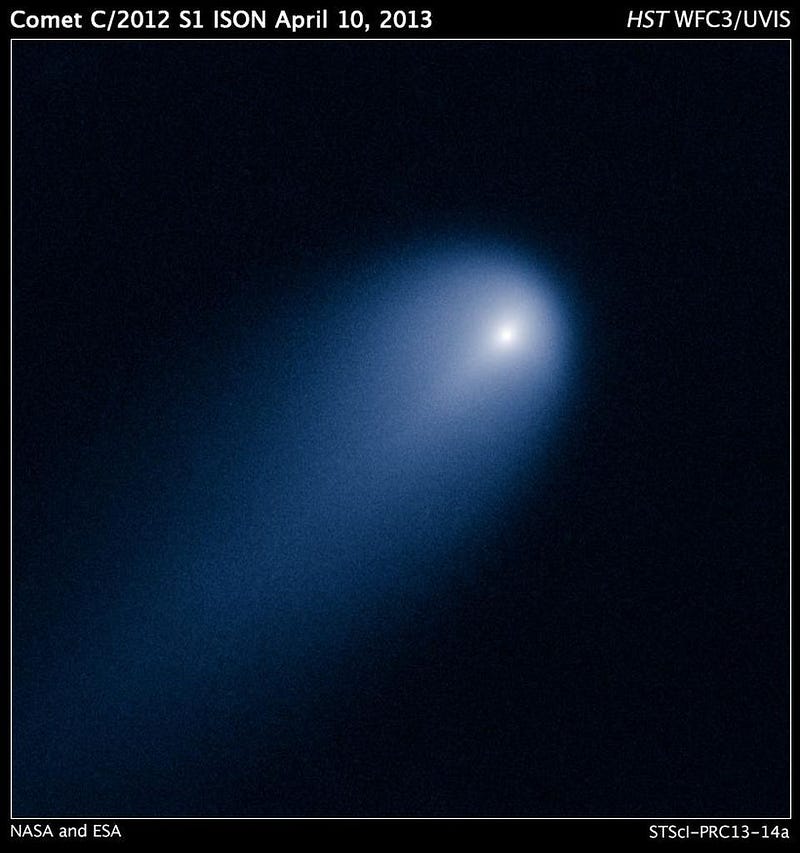
The ion tail always points directly away from the Sun, and is always blue in color. As the comet gets even closer to the Sun, however, somewhere around the orbit of Mars, it heats up further. As the nucleus of the comet gets hot, more of the ices melt and diffuse away from the surface, creating a large, diffuse set of particles around the nucleus. This diffuse region is known as the coma of a comet, and is made of a mix of gas and dust.
Once this coma gets created, it has no option but to get struck by sunlight. The pressure from the sunlight striking the coma pushes the dust particles out of the coma and away from the Sun, creating a second, yellow/white tail: a dust tail. Although the blue ion tail always points directly away from the Sun, the dust tail curves, as the comet moves in its elliptical orbit around the Sun.
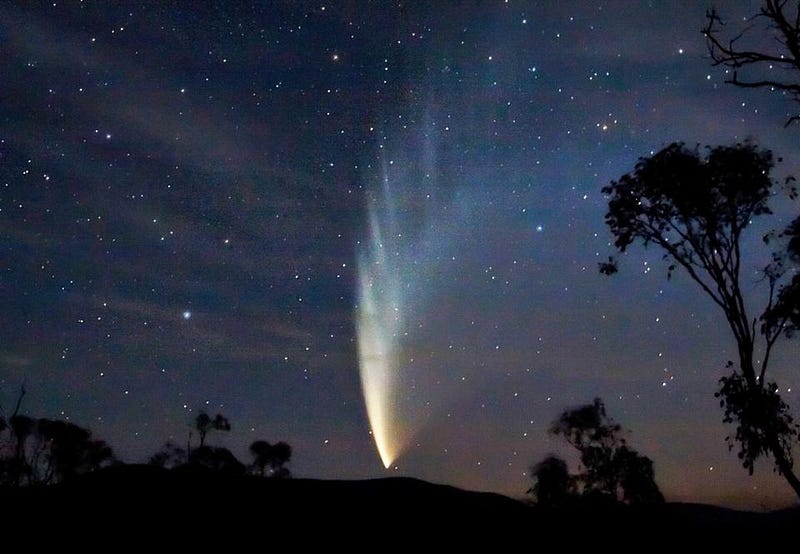
The ion tail is narrow, as all the ions of a specific type are the same size. The dust tail is wide, since dust particles vary in size and so are given a variety of speeds. And finally, large particles can be sheared off the comet, creating what’s known as a debris stream. This stream will continue in the same elliptical orbit that a comet follows, but will spread out along the path over time. When a planet (like Earth) passes through the debris stream, it creates a meteor shower. Yes, Earth is not the only planet that experiences them; even worlds like Mercury without an atmosphere can have meteor showers!

But the coma is more than dust. There is also gas, created from the sublimated compounds that were part of the comet. There aren’t merely simple ices and rocks on this body, but more complex molecules made out of these fundamental building blocks: mostly hydrogen, oxygen, carbon, and nitrogen. Two molecules that are of particular interest are cyanide/cyanogen (CN: a carbon-nitrogen bond) and diatomic carbon (C2: a carbon-carbon bond).
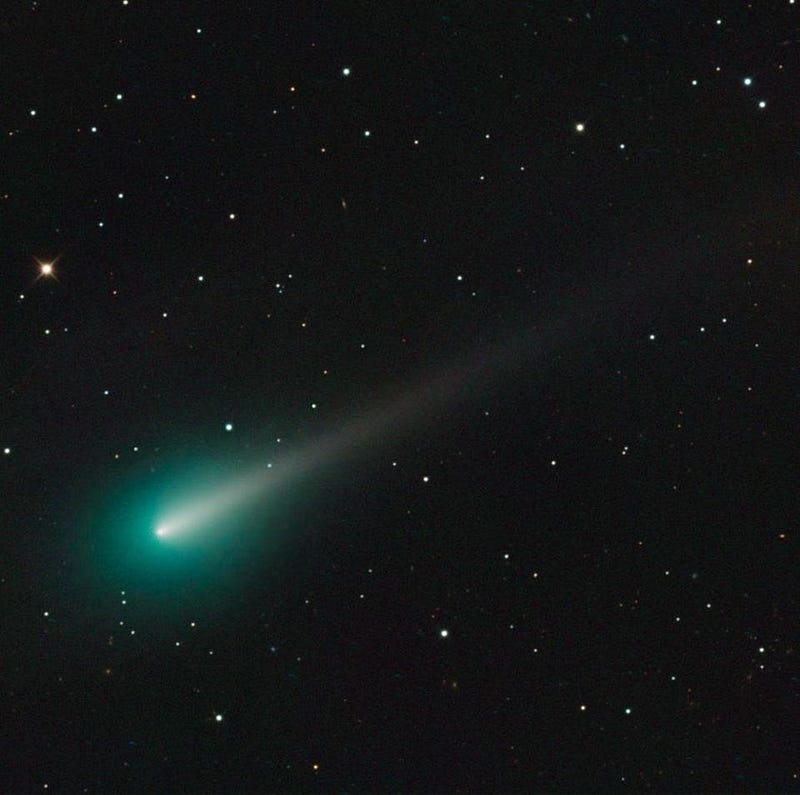
This teal or blue-green color comes about because when these gases are stimulated by the ultraviolet light present in sunlight, their bound electrons get kicked to higher energy levels: a basic rule of atomic transitions. But electrons don’t remain forever in a higher-energy state; they drop down to lower energy levels. And when they do, some of those transitions result in an emission line that falls in a part of the electromagnetic spectrum that human eyes are sensitive to.
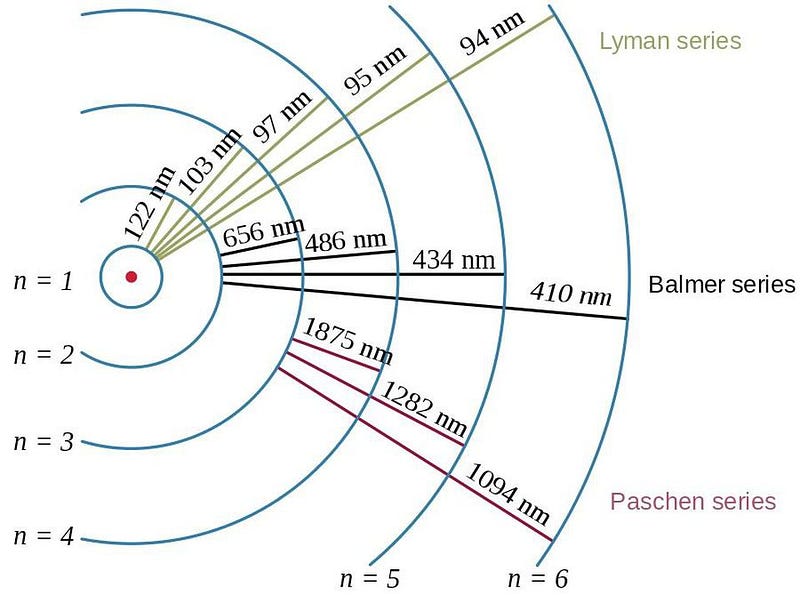
When you see that green color, it’s an indicator of a combination of things:
- that the coma contains large amounts of CN and C2 molecules,
- that the comet is active (outgassing) and warm (close to the Sun), and
- that the potential for a schism or eruption is at its highest.
As of August 9th, there’s a relatively close comet just 70 million miles (113 million km) from Earth: Comet C/2017 S3 (PANSTARRS). It has a green glow, it’s relatively bright right now, and it’s still headed towards the Sun. It’s being called the “Incredible Hulk” comet for its green color.

But it isn’t angry, nor is it unusual. While its closest approach to Earth was August 7th/8th, its closest approach to the Sun won’t be until August 15th, and this will be when it’s most likely to have its icy nucleus split apart, which sometimes happens. Whenever an event like that occurs, there is the spectacular opportunity of the comet brightening tremendously. Even though it’s relatively close to the Sun, it’s still visible in the night sky from most locations on Earth.
If it experiences such an eruptive event, it could become visible, despite its proximity to the Sun, to the naked eye.
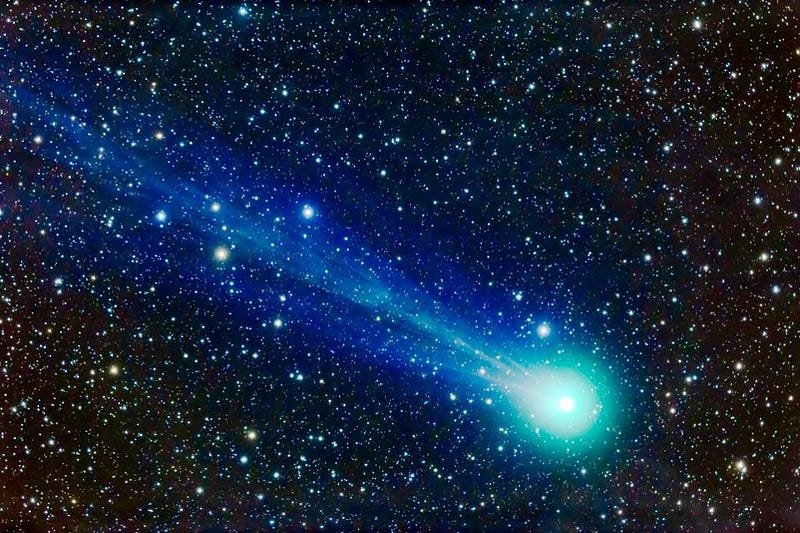
Just before dawn on the morning of August 15th will be the best chance of seeing it, if we’re lucky enough to get a brightening event, from anywhere on Earth. (Including the Southern Hemisphere!)

But even though things aren’t looking particularly good for this comet, there’s always a chance it will surprise us. Furthermore, the features that you can expect for this comet — the ion tail, the dust tail, the coma, and the nucleus — are common to practically all comets that enter our inner Solar System. When a comet gets warm enough, it creates an extended, gas-rich cloud known as a coma around its nucleus. If the coma contains carbon-nitrogen and carbon-carbon bonds, the Sun’s ultraviolet light will excite the electrons inside it, causing them to emit a green glow when they drop down in energy. And whenever you see that green glow, know that there’s a chance of the comet’s nucleus splitting apart. It may not happen this time, or even most times, but there’s a chance for a visually spectacular show. When it comes to skywatching, it’s hard to ask for more.
Ethan Siegel is the author of Beyond the Galaxy and Treknology. You can pre-order his third book, currently in development: the Encyclopaedia Cosmologica.





